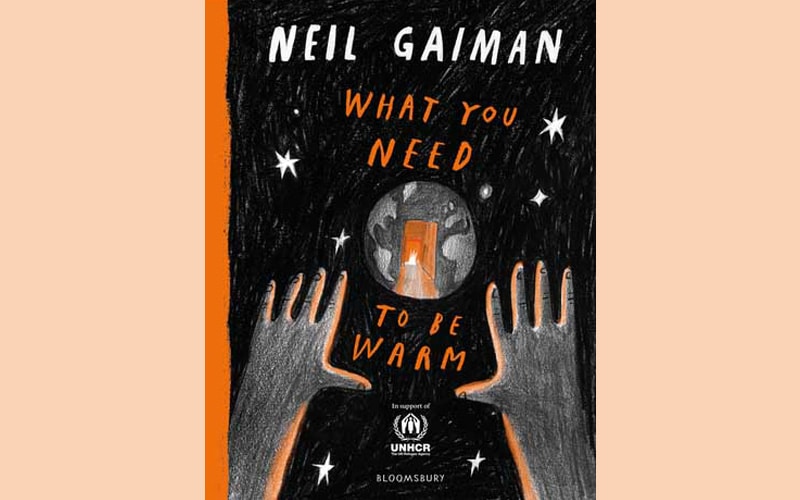Stereotypically, we’re not short on warmth in Cyprus. We have over 300 sunny days per year, and there are lots of contexts in which we do our best to live up to the notion of ourselves as hospitable, as caring, as warm-bloodedly Mediterranean in culture and outlook. But now the weather begins to turn, and as our central heating or air-conditioners or gas stoves or fireplaces start to radiate heat for the winter, we should also reflect on the fact that Cyprus is host to 13,000 asylum seekers, many of whom struggle to keep warm in both a literal and a figurative sense in the migrant camps of Kokkinotrimithia and Kofinou. Neil Gaiman’s free-form poem, whittled out of 25,000 words tweeted in response to his request for his followers to tell him what reminds them of warmth, is published in aid of UNHCR, the UN refugee agency for whom Gaiman is an ambassador, and is a book for children that every adult ought to read.
Each double-page of the book includes a stanza of the poem illustrated by a different artist, all using a palette consisting of black, white, and orange. As the poem itself is a sequence of images that draw upon all the senses and their ramifications on mind and mood, what we get is a collaborative interweaving of the verbal and visual, a whole that is made more beautiful for the fact that we can see and hear the straining of differences. Gaiman’s voice is tender and moving throughout, but within his shaping, it is easy to tell that the ideas are derived from more than one consciousness, jumping from the physicality of a mouth burned by a baked potato, to the warmth that comes from being trusted, or from the memory of a childhood bed. Equally, the artwork ranges from the naturalistic to the abstract to the cartoonish, but each piece resonates with the words it links with, and the book is – like any good artwork or any good society – more perfect and alive for the diversity that underlies its singularity.
This is a book that focuses on the transition from cold to warm, and in doing so it manages the remarkable feat of making a reader look both inwards and outwards, and feel both the warmth of nostalgia and the chill of neglect. It reminds us of the warming moments in our own lives and makes us wonder just how much we are doing and could be doing to help others feel the warmth we’ve been fortunate enough to experience. Add to that the fact that it’s beautiful to listen to and to look at, and you have a small book of immense value.







Click here to change your cookie preferences